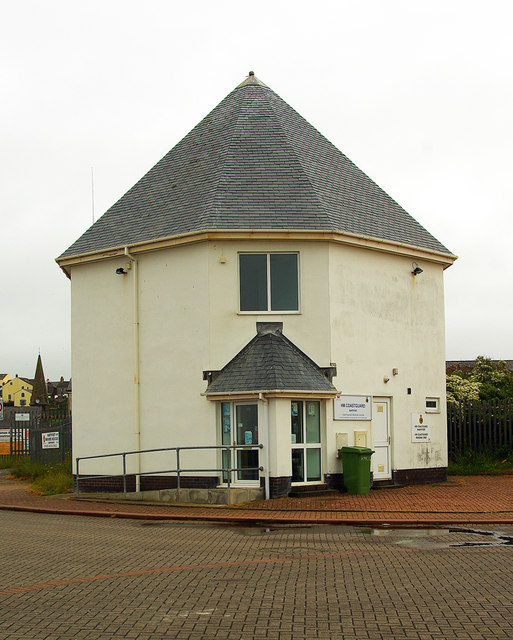Topics > Civil Parishes in Cumbria > Maryport Town Council Area > Maryport, 1848
Maryport, 1848
MARYPORT, a chapelry, market-town, and seaport, in the parish of Cross-Cannonby, union of Cockermouth, Allerdale ward below Derwent, W. division of Cumberland, 30 miles (S.W. by W.) from Carlisle, and 310 (N.W. by N.) from London; containing 5,311 inhabitants. This place, which is situated at the mouth of the river Ellen, was a very inconsiderable fishing-village, called Ellen-foot, previously to 1750, when the foundations of the present town and harbour were laid by Humphrey Senhouse, Esq., the proprietor of the land, who bestowed upon it the name of Maryport, in compliment to his lady. It is irregularly built, partly on the sea-shore, and partly on the cliff; the streets are spacious, and the atmosphere is healthy. In 1833, an act was obtained for the improvement of the harbour, and for lighting and otherwise improving the town. Coal, limestone, and red freestone are procured in the vicinity, and exported; timber is imported from America and the West Indies, and iron and flax from the Baltic. The port is a member of the port of Whitehaven, and of late years has been rapidly rising into importance: the number of vessels of above 50 tons registered here is 56, and their aggregate burthen 7074 tons. There are three yards for ship-building, with a patent-slip; and many vessels have been built for the coasting and foreign trade. A tramroad has been constructed for the more ready conveyance of the coal to the harbour; and a railway for locomotive steam-engines leads to Carlisle, where it joins the Newcastle line: there is a railway also to Whitehaven, completed in 1847. The manufactures consist chiefly of cotton and linen checks, sailcloth, cables, coarse earthenware, leather, nails, and anchors. The herring-fishery here is productive, and considerable quantities of salmon trout are caught in the river. The principal market is on Friday; there is an inferior one on Tuesday. The chapelry comprises by computation 2415 acres, of which about 400 acres are meadow and pasture, and the remainder arable; the surface is varied, and the higher grounds command fine marine views. The living is a perpetual curacy; net income, £102; patron, J. P. Senhouse, Esq. The chapel, erected in 1760, and consecrated in 1763, is a neat structure with a tower, in the later English style, dedicated to St. Mary. There are places of worship for Baptists, Burghers, the Society of Friends, Presbyterians, and Wesleyans. The remains of an important Roman station, with military roads leading to Moresby, Old Carlisle, and Ambleside, are visible on an eminence northward of the town, at the village of Ellenborough; and numerous relics of antiquity have been discovered. From this station a wall is said to have been constructed by the Romans to Workington, as a protection against the invasions of the Picts and Scots. In the southern part of the town is Mote Hill, on which is an artificial moated mound, 160 yards in circumference.
Extract from: A Topographical Dictionary of England comprising the several counties, cities, boroughs, corporate and market towns, parishes, and townships..... 7th Edition, by Samuel Lewis, London, 1848.












